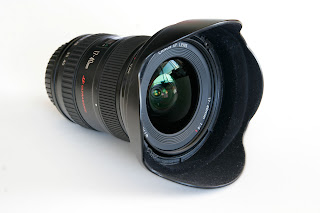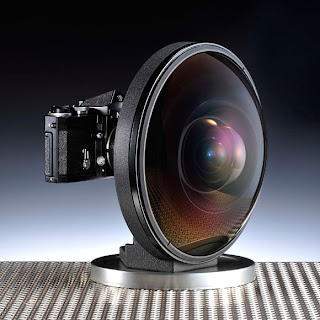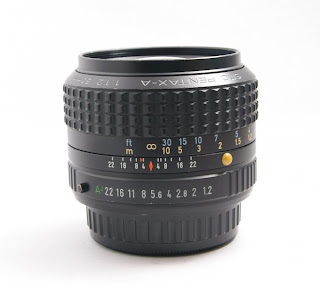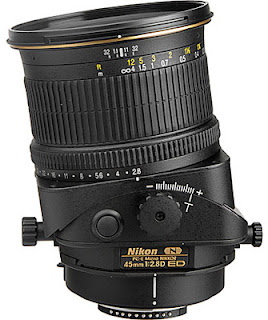The lens is effectively the single most important component of the camera. Without the lens there simply would be no camera. A camera lens is actually an assembly of lenses. The lenses job is to focus light on the film or the chip. Designing a lens is a daunting task. Lens designers have to overcome a number of challenges called aberration. We will have a complete article on aberrations in the future.
For now we will just concentrate on lenses.
INSIDE OF A CAMERA LENS:
This is a very basic layout of a camera lens. Depending upon the lens there could be a lot more of those lens groups in the assembly.
FOCAL LENGTH:
The basic operation of lens is something we all learned or at least some of us learned in school. Light rays coming from an object pass through the lens and congregate on a point. The point where they meet is called the focus. The distance of this point from the optical center of the lens is called the focal length of the lens. The photographic film or the sensor is placed at the focus
Have you ever shot an entire city from the top of a fort or may be the top of a tower or from any other structure. Mostly likely you will only be able to capture a part of the city unless you use some kind of a panoramic view software. So even though you can see a lot more than what your photograph captured you will still see just a part of it in the photograph. This is because the lens has only that much angle of view. The angle of view is the angular extent to which a scene is captured by a camera. Say may be you manage to locate your house from up there, although that has got to be one big house, and you zoom in on it you will see more of your house and less of everything else thus reducing the angle of view even further.
The angle of view of a lens is determined by its focal length.
The angle of view of a lens is determined by its focal length.
Depending on the focal length the lenses are classified as
1) Normal lenses
2) Wide Angle lenses: Which smaller focal length and have a wide angle of view
3) Telephoto lenses: Which have a greater focal length and a narrow angle of view
Always remember:
When the focal length is very large then the lens is a telephoto lens and gives a narrow angle of view. When the focal length is small then the lens is a wide angle lens and gives a wide angle of view.
FOCAL LENGTH AND MAGNIFICATION
Now magnification is simply getting an enlarged image of something. A lot of times we want to shoot something that is really far away. To get a good shot of it you can either go towards it or bring it to you.
Many a times going near the subject would be impossible. If you enjoy wildlife photography and want to shoot a rhino......well you get the point. In such cases if the focal length is large then the image is magnified.
Focal length and magnification are also related to each other.
The greater the focal length the more the magnification.
Smaller the focal length less the magnification.
Surely, most of you will have concluded one thing from this:
The grater the magnification smaller is the angle of view which means at higher magnification you will see less of your subject.
The smaller the magnification the greater is the angle of view.
You can see here that as we focus more at center of the giant wheel we see less of the giant wheel.
You can see here that as we focus more at center of the giant wheel we see less of the giant wheel.
So by changing the focal length of the lens you can get a wide angle view of something or a telephoto view.
WAIT A MINUTE…CHANGING FOCAL LENGTHS?
Yes.You heard it right.What's that? How can a focal length of a lens change you ask? Isn’t it supposed to stay the same? Yes and no. The focal length of any lens doesn’t change but do you remember me telling you that a camera lens is actually an assembly of lenses. The focal length can be effectively varied by varying the positions of the lenses in the lens assembly. Will not go into the details of this right now. But will definitely cover it in an upcoming tutorial for those interested.
TYPES OF LENSES
Most lenses today can be classified as
Zoom lenses
Macro lenses
Telephoto lenses
Prime lens
Zoom lenses are the ones which can vary their focal lengths.
Macro lenses are meant to focus on a relatively small area, used for close-ups . Example a flower or an insect
Telephoto lenses are those in which the length of the lens is smaller than the focal length.
Prime lenses are the ones with a single focal length.
Few other lenses are fish-eye lens and the tilt shift lens
A fish eye lens is ultra wide angle lens to capture a very wide image which is highly distorted.
Tilt shift lenses as the name suggest tilt and shift the lens relative to the image plane. The image plane is the film or the chip where the image is formed. The lens is shifted so that
 |
| Canon 17-40mm Wide angle lens |
 |
| A NIKKOR fish eye lens |







No comments:
Post a Comment